#sulova
Text
Yarın şampiyonluk yolunda onemli bir maça cıkacak olan Merzifon Gençler Birliği Takımımıza destek olalım Sulova Belediye spor ile Sentetik Sağda 13:00 da yapılacak musabakaya tüm Futbol severleri Bekliyoruz
Yarın şampiyonluk yolunda onemli bir maça cıkacak olan Merzifon Gençler Birliği Takımımıza destek olalım
Sulova Belediye spor ile Sentetik Sağda 13:00 da yapılacak musabakaya tüm Futbol severleri Bekliyoruz
via IFTTT
View On WordPress
#1300#bekliyoruz#Belediye#bir#birliği#cıkacak#Destek#Futbol#Gençler#IFTTT#ile#Instagram#maça#merzifon#musabakaya#olalim#olan#önemli#sağda#şampiyonluk#sentetik#severleri#Spor#sulova#takımımıza#Tarihi#Tüm#yapılacak?#yarın#yolunda
0 notes
Photo

Woman dress from Sulovë, Albania.
505 notes
·
View notes
Photo

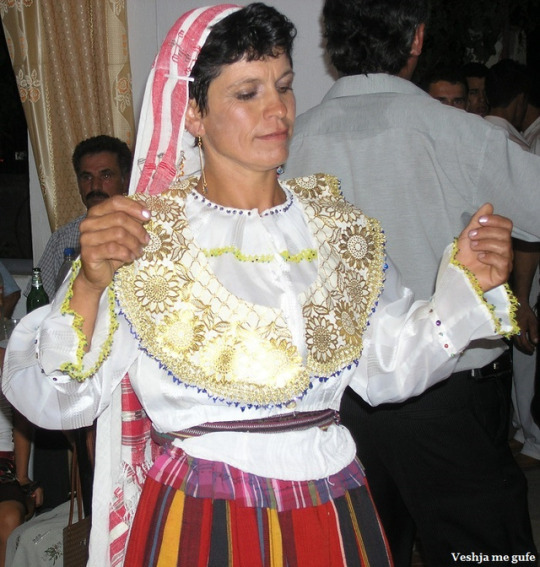
Traditional clothing from Sulova, Albania
12 notes
·
View notes
Text
The Curse of Cotton in Uzbekistan
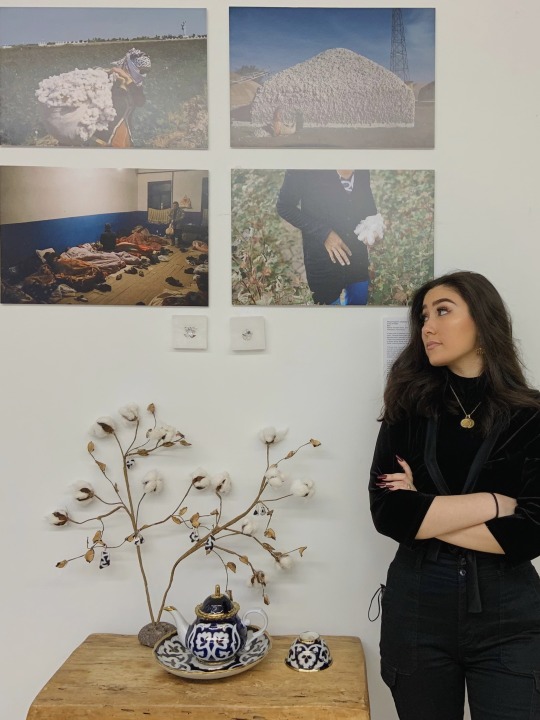

my links | my tiktok account
this event is still running until dec 11th, get your tickets now!
Last weekend, I went to the news of Central Asia exhibition at the NYC Jewelry Library curated by Aida Sulova. It was an amazing experience and it felt like I was in Central Asia. It showcased jewelry and cultural pieces of post-soviet countries of Central Asia such as Uzbekistan, Turkmenistan, Tajikistan, Kazakhstan, and Kyrgyzstan, with a backstory of its significance. These pieces were meant to represent the political and historical background of each country.
I went with my mother and when it came to the piece that represented Uzbekistan, she started crying. I realized why, it was because she was looking at the Curse of Cotton piece by Dilyara Kayipova and Timur Karpov.
Cotton (or “paxta” in Uzbek) is notorious in Uzbekistan. The design is commonly seen in plates, teapots, and teacups. However, it was worked for through forced labor during the Soviet Union period, unlike today.
Cotton’s ready by late August. By September, students, from the 3rd grade to college, are sent to pick cotton by their schools.
Uzbekistan, or the Uzbek Soviet Socialist Republic at the time, was ranked top tier when it came to cotton. Cotton picking was one of the ways that helped keep the economy stable during the Soviet Union. When cotton was in season, the entirety of Uzbekistan went crazy because 6 million tons of cotton needed to be picked by January. If successful, it would be notified through television and radio mediums that that certain amount of cotton was picked for that year.
Students picked cotton for every year that they attended school. College students would be at campus for only a week and then it’s off to cotton picking for 4 months. They’d come back home before the new year. Until then, they had to sleep in quarters with 30-40 people of the same gender and have limited lunch breaks consisting of 30-45 minutes having bread, tea, and macaroni soup. Hours were long, ranging from 7 am to 7 pm (12 hours). With high school students, because they were minors, they stayed for half the months that college students stayed at the field and their hours weren’t as long. With elementary school students, their hours weren’t long either and they went home after their hours were up.
College and high school kids were required to pick 100 kg (220 lbs) of cotton while elementary kids were allowed to pick 5 kg of cotton (11 lbs).
Cotton picking would commence no matter the weather conditions. If it was snowing, cotton was picked. If it was raining, cotton was picked. If it was windy, cotton was picked. Hands would become bruised, blistered, and bloody.
High school and college students, excluding elementary school students, were paid through a stipend. If the student didn’t pick enough cotton, the stipend wouldn’t pay enough. For college students, you’d be kicked out of college and wouldn’t receive a stipend if you were caught taking an unauthorized break or refused to pick the cotton. The same went for high school students, once again excluding elementary school students.
Some students that come from higher class families would have their parents buy phony medical excuse papers so their kids wouldn’t pick cotton. It worked for them but, even then, they still had to work a light job doing something else.
With the students at the field, some parents were allowed to see their kids hard at work, it’s not like they weren’t allowed to. But even then, the parents had to pick cotton through their job so they didn’t have time to see their kids, anyway.
Some cotton fields would be notified that at a certain time, within a day of the week, pesticides would be sprayed through a plane that passes by the field. But sometimes, those planes would pass by spraying the pesticides even while people were on the field. If they weren’t notified, some died of pesticide poisoning.
After all that cotton picking, no one in Uzbekistan had the chance to wear cotton-made clothes since it was exported to other republics of the Soviet Union.
But, if you wanted to serve your country, you had to pick cotton.
#uzbekistan#uzbek#persian#turkic#soviet union#soviet#ussr art#ussr#ussr (former soviet union)#made in ussr#russia#tiktok#central asian#central asia#kyrgyz#kyrgyzstan#kazakh#kazakhstan#turkmen#turkmenistan#tajik#tajikistan#communist#communism#socialist#socialism
129 notes
·
View notes
Photo




53rd International Film Festival in Karlovy Vary (KVIFF), Czech Republic, on July 5, 2018. Photo/Katerina Sulova (CTK via AP Images)
Red Carpet, The Thermal Hotel
16 notes
·
View notes
Text
Reading Presentation
1) What is the test you’ve chosen, who is it by, and what kind of text is?
The text I have selected is a scholarly journal entitled ‘Act now to advert a climate crisis’ which was published anonymously with the publication title being ‘Nature, London’.
https://www.proquest.com/docview/2306403953/fulltext/7105C2BEE26F4A7FPQ/1?accountid=12441
2) What is the issue your text has taken on, and what does it have to do with your work?
My work is centred around the destruction of the environment such via issues such as climate change, deforestation, and pollution. This text takes on the issue of the importance of immediate action when it comes to these environmental issues, we have lost the privilege of time and we have to act now in order to avoid irreversible damage.
3) Summarize: What does the text have to say on this issue? What’s interesting about it?
The text talks about the inconsequential steps that have been taken to prevent a climate crisis and how it hasn’t been enough or the right steps we’re not taken to ensure these rules, placed for the sake of the environment, where followed. As an example, the promise to lower greenhouse gas after the 2015 Paris climate agreements which placed to restrict carbon emissions one of the biggest culprits of global warming.
The text talks about how we are on the verge of the ‘point of no return’ and how we have ignored this issue for too long. ‘Tyndall centre for Climate change research at the university of Manchester UK thinks that time has run out for what he calls "incremental decarbonizing of the free-market economy" (see page 348).
4) Choose an extended passage
Last year, the IPCC warned that limiting global warming to 1.5 °C above pre-industrial levels would be a colossal undertaking, requiring greenhouse-gas emissions to be halved by 2030. The transition to renewable energy alone would cost US$2.4 trillion annually. And yet, without such drastic measures, the world is likely to exceed 3 °C of warming by the end of the century and will experience more frequent and more severe catastrophic effects, including weather extremes, rising seas and drought (see page 333). Scientists on the meteorological front line see temperature records continually broken, and this is leading to despair (see page 317): from watching the natural world deteriorate before their eyes, and from continued inaction by heads of government despite compelling evidence of the importance of intervention.
5) Select creative works
· Jenny Kendler – Lounging through the flood
https://jennykendler.com/section/483111-Lounging-Through-the-Flood.html
· Aida Sulova – plastic waste art
https://www.aidasulova.com/once-upon-a-plastic-bag
· Coexistence environmental art campaign – 125 Elephant sculptures https://www.shutterstock.com/editorial/image-editorial/the-elephant-family-coexistence-environmental-art-campaign-london-uk-15-may-2021-11905345o
0 notes
Text
REVOLUTIONS & MOVEMENTS
An AFI Exhibition at Dupont Underground
September 4 - 9, 2018
Dupont Underground
19 Dupont Circle NW
Washington, D.C. 20036
From the protest anthems of Emel Mathlouthi that galvanized millions during the Tunisian Revolution to the subversive concept pop art of Ganzeer, this exhibition is a rallying cry, loudly proclaiming the power of art to create positive change around the world. Offering vital perspectives on issues like freedom of expression, human and women’s rights, immigration, the refugee crisis, LGBTQI rights, and social and environmental justice, these artists work across a range of disciplines to show us what resistance and revolutions look like through the creative lens.
Featuring visual art by: Fadi Asmar, Negar Behbahani, Ram Devineni, Chitra Ganesh, Mariam Ghani, Ganzeer, Roya Farassat, Seán Hannan, Ash Koosha, Kairon Liu, and Aida Sulova.
FULL CATALOGUE
FACEBOOK EVENT
1 note
·
View note
Text
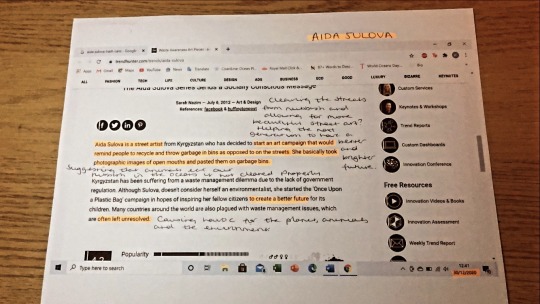
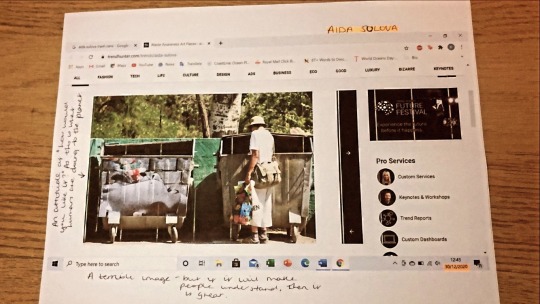
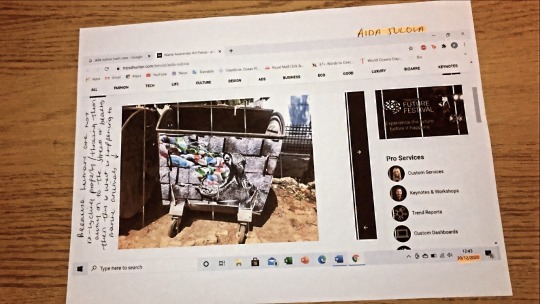
Aida Sulova - taken from contextual research folder
0 notes
Text
week five: green consumer movement
4. Green Consumer Movement. Further research this topic to identify key principles advanced in the 1990s. ( reference: Introduction to the Green Consumer Supermarket Guide, 34, The Design History Reader - on closed reserve at library ) Find 2 examples of contemporary art/ design practice which either raise awareness of these issues through communication strategies, or practice them as part of an up cycling production strategy
“The beginning of the modern environmental movement can be traced to 1962 and Rachel Carson's book "Silent Spring," which first raised widespread public awareness of the impact of human activities on the environment. The movement gained momentum in the U.S. and Western Europe in the 1970s with the establishment of Earth Day and of the Green Movement in Germany.”
Furthering research, environmentalism became a common word used for this movement. Through this movement a lot of advertisers responded. Focusing on environmental issues, promoting messages such as environmental awareness towards consumers. This first started to appear in the 1970′s. The green movement added figures and images to help make an emotional appeal to everyone. Show what has been done and what needed to be done. Keep America Beautiful was a public service announcement that was classed as one of the best ads. These sorts of things were part of the Green movement. Creating more and more awareness through our common uses, day to day.
https://adage.com/article/adage-encyclopedia/environmental-movement/98455/
Two artists who help with the Green consumer movement:
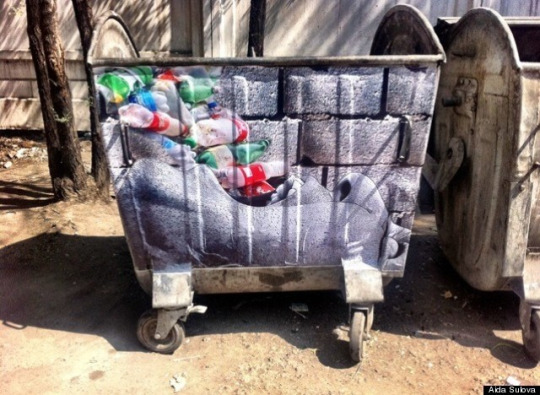
Aida Sulova, Trash can’s:
Using garbage bins as a canvas, printing a mouth and rubbish. “remind people that what they throw into the world, eventually ends up inside us.” Referring to the idea of the chemicals in the air, we breath. The plastic we throw away, our animals will eat it. Eating them, ends up inside us.
I think this idea is brilliant, something we see almost everyday putting this idea right in front of our eyes. Using this to show what is happening. With the green consumer movement using ads to create awareness, this is another twist in the 21st century. Not an ad but like I said something we use, see and look at everyday. Putting the idea in our minds about our rubbish use and the impact on our environment. If we see this everyday, we will become more aware. Using less plastics, being more careful on what we use. Composting. Such a simple but every effective art form. - My major, I could go round and find art like this. Photographing it and putting in on social media or other places. Spreading it round and helping bring this to attention. What happens to our waste and bring it to peoples attention what we should be doing. Inspiring them and creating awareness of something that is very important, all through photos.
Paulo Grangeon’s 1,600 Pandas:
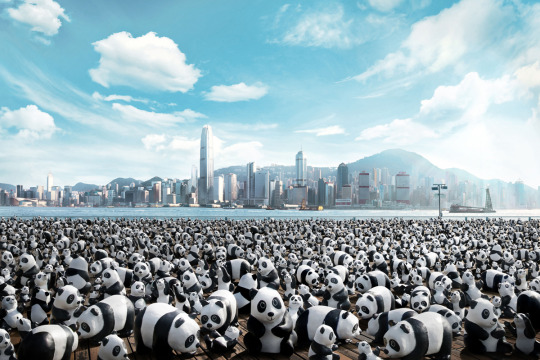
“Pandas on Tour,” he created 1,600 papier-mâché bears meant to represent the actual number of pandas left on the planet (recent estimates actually place the number slightly below that, at 1,596).” - Through Photography and Art, Paulo has created these amazing sculptures to show how little of this wildlife we have. Getting people to see how all our Panda can fit in one area is quite sad. Helps people to understand the impact this wildlife is having. Due to our deforestation and our impact on their environment we are ruining their way of life. Destroying the only things they have survive. “Habitat loss and fragmentation remain the gravest threats to the survival of the species.” This is such a creative way of showing what is happening. These pandas deserve a home that we aren’t giving them. Expect using it for our own good, greed. Art projects like these and using photography to spread it around the world will really help impact people. See a visional rather than reading helps more people. Different people learn differently and this is a way of catering to them. I am not sure if Paulo took this photo himself but if so it is combining all these new principles, a new way of helping our environment and wildlife, a new technology...
0 notes
Photo

Those magical winter view's. #natureaddict #big_shotz #slovakia @beautifulslovakia #insta_svk #slovensko #ig_europe #wonderful_places #shoot2kill #vscoslovakia #lifeofadventure #letsgosomewhere #vsconature #landscape #canon #travelmore #sulova #hike #vylet #hory #slnko #sunset #explore #adventure
#slnko#travelmore#vylet#canon#letsgosomewhere#slovensko#shoot2kill#hory#vsconature#landscape#lifeofadventure#slovakia#ig_europe#wonderful_places#big_shotz#explore#adventure#insta_svk#vscoslovakia#hike#natureaddict#sunset#sulova
3 notes
·
View notes
Text
Çorum Oto Anahtar
Amasya Çilingir, Osmancık Çilingir, Sulova Çilingir, Merzifon Çilingir, Kargı Çilingir, Laçin Çilingir, Kırıkkale Çilingir.
Çorum Oto Anahtar
0 notes
Photo

Yarın şampiyonluk yolunda onemli bir maça cıkacak olan Merzifon Gençler Birliği Takımımıza destek olalım Sulova Belediye spor ile Sentetik Sağda 13:00 da yapılacak musabakaya tüm Futbol severleri Bekliyoruz https://www.instagram.com/p/CpphKb5oKqt/?igshid=NGJjMDIxMWI=
0 notes
Text
Semester 2 Assessment 2
Concept statement
My work was about a series of drawing in two sheets of paper and they were presented by pasting on each can that used to serve chocolate wafer as I thought it was a kind of recycling and it precisely related to my theme. The form I presented was inspired by an artwork called trash can from artist Aida Sulova as she decided to start an art campaign to bring awareness which remind people to recycle and throw garbage in bins as opposed to on the streets. Aida pasted a open mouth picture on a bin and I thought it basically told people that they need to throw their garbage into bin rather than anywhere on a street. It may also imply that people would eventually bear the consequences of destroying the environment.
There were two different drawings that pasted on each can in my final work. I drew two images on two side in one sheet of paper by using different material and the dimension of each image on both sides were different as well. On my first drawing, two images on both sides had a equal dimension, but on my second drawing, the dimension of image on the left side was smaller than the right side. This is because in the first drawing, I want to show that this is what the world looked like before. I believe the natural environment was good in the past and the relation between human and the natural environment was harmonious as well. In depth, I think this is the earliest arrangement of the Earth's ecology, which means that the Earth is fair as the ecological environment has always been balanced, for example, trees and animals can grow normally, the natural resources available to people are limited. So in my first drawing, I firstly set the size of the two sides of the image to the same, human and natural environment represent one side respectively. I believe everywhere in the world there is no lack of the most primitive and beautiful natural environment endowed by the earth, which can include dense forests, clear seawater or river water. But with the passage of time, the first and main problem is the emergence of overpopulation, which directly led to the natural resources that the earth originally endowed become insufficient, so people began to explore and exploit resources to meet people's demand. Secondly, when the population become too large, people in society will feel more competitive pressure to survive, because they all want their families to live a good life, then there would be a new industry emerge, further more establishment of coal, metallurgy, chemical industry based industrial production system. However, in this production process, people's living standards have been significantly and greatly improved, but at the same time it indirectly affects the natural environment. Many environmental problems began to emerge one by one and the relation between human and the natural environment has changed since it. Industrial revolution can explain this phenomenon and according to the article that explain the impact of environment is: “The world saw a major increase in population, which, along with an increase in living standards, led to the depletion of natural resources. The use of chemicals and fuel in factories resulted in increased air and water pollution."
In my second drawing on my second can, I narrowed down the image on the left, which represents the natural environment and I simply painted several environmental problems on it. There is an acid rain in the sky has caused plants and some trees to fail to grow normally. It seems that the fallen leaves of the trees are all gone. Look at water, it cannot tell whether it is the sea or the small river because it has been affected to a certain extent. The shark is trying to eat small fish and shrimps because they're also trying to survive, but the implication here is oceans have been polluted. Fish, shrimps and sharks are all facing extinction. This is a system of ecological cycles. In the image on the right, people still don't seem to be aware of the dangers of environmental problems because they are continuing their industries and destruction.
I believe in one day, if all the natural resource is exhausted, it means end of the world. If human do not realize and start to protect, then the day will come soon.
Reference:
Gillaspy, R, "The Industrial Revolution: Impacts on the Environment - Video & Lesson Transcript | Study.com.". in Study.com, , 2018, <https://study.com/academy/lesson/the-industrial-revolution-impacts-on-the-environment.html> [accessed 18 September 2018].
0 notes
Text
Petra Kvitova rallies to win Prague Open final
Petra Kvitova rallies to win Prague Open final
[ad_1]
PRAGUE — Second-seeded Petra Kvitova came from a set down to beat seventh-seeded Mihaela Buzarnescu of Romania 4-6, 6-2, 6-3 in the Prague Open final on Saturday.
It was the 23rd career WTA title for the two-time Wimbledon champion.
Petra Kvitova celebrates after defeating Mihaela Buzarnescu in the Prague Open final on Saturday. Katerina Sulova/CTK via AP
Kvitova broke Buzarnescu in…
View On WordPress
0 notes
Photo
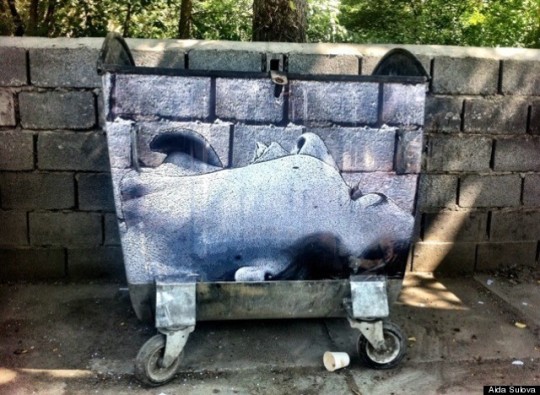

Aida Sulova
A Kyrgyz street artist named Aida Sulova is bringing awareness to the rampant garbage problem in Bishkek by using trash bins as a canvas to express her socially conscious message.
The street artist pastes photographic images of open mouths on garbage cans throughout the city to “remind people that what they throw into the world , eventually ends up inside us."
0 notes

